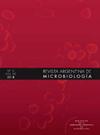Factores de riesgo asociados a la presentación de brucelosis en establecimientos mixtos de caprinos-bovinos de la provincia de Formosa, Argentina
IF 2.1
4区 生物学
Q4 MICROBIOLOGY
引用次数: 0
Abstract
Brucellosis is a zoonotic disease with a worldwide distribution that causes significant productive losses and negative impacts on public health. The aim of this work was to identify the risk factors associated with the presence of brucellosis in mixed farms (cattle/goats) in the central-western region of the province of Formosa. Sixty seven mixed farms with 7,855 animals (2,943 cattle and 4,912 goats) were randomly sampled during 2022/2023. The samples were serologically analyzed (BPA + FPA) to determine which animals were positive. Likewise, in each farm, a confidential survey was carried out to evaluate potential associated variables. The statistical analysis was performed using Generalized Linear Mixed Models (GLMM) with binomial distribution, logarithmic link function, and farm as a random variable. The estimated prevalence of brucellosis in mixed farms was 9%, while the joint prevalence per animal (cattle and goats) was 2.75%. The prevalence of brucellosis in cattle and goats was explained by the presence of animals with reproductive signs (odds ratio, OR = 40), the occurrence of abortions in the last term of gestation and the birth of weak offspring (OR = 5.3), incorrect treatment of abortions (OR = 8), the introduction of animals from other farms (OR = 5.9), and not having a negative brucellosis certificate (OR = 9.6). The management practices conducted in each farm such as preventive measures, sanitation practices for the pens, and prevention measures for the workers, are important for the control of brucellosis.
[阿根廷福莫萨省混合饲养场(山羊和牛)出现布鲁氏菌病的相关风险因素]。
布鲁氏菌病是一种分布于世界各地的人畜共患疾病,会造成严重的生产损失,并对公众健康产生负面影响。这项工作旨在确定与福莫萨省中西部地区混合养殖场(牛/羊)中出现布鲁氏菌病相关的风险因素。在 2022/2023 年期间,对 67 个混合农场的 7855 头牲畜(2943 头牛和 4912 只山羊)进行了随机抽样。对样本进行血清学分析(BPA + FPA),以确定哪些动物呈阳性。同样,还对每个农场进行了保密调查,以评估潜在的相关变量。统计分析采用广义线性混合模型(GLMM),二项分布,对数连接函数,农场为随机变量。混合养殖场的布鲁氏菌病流行率估计为 9%,而每头动物(牛和山羊)的联合流行率为 2.75%。牛和山羊布鲁氏菌病流行的原因包括:动物出现生殖症状(几率比,OR=40)、妊娠末期发生流产和产下弱小后代(OR=5.3)、流产处理不当(OR=8)、从其他农场引进动物(OR=5.9)和没有阴性布鲁氏菌病证明(OR=9.6)。每个猪场的管理措施,如预防措施、圈舍卫生措施和工人预防措施,对控制布鲁氏菌病非常重要。
本文章由计算机程序翻译,如有差异,请以英文原文为准。
求助全文
约1分钟内获得全文
求助全文
来源期刊

Revista Argentina de microbiologia
MICROBIOLOGY-
CiteScore
3.30
自引率
0.00%
发文量
46
审稿时长
>12 weeks
期刊介绍:
La Revista Argentina de Microbiología es una publicación trimestral editada por la Asociación Argentina de Microbiología y destinada a la difusión de trabajos científicos en las distintas áreas de la Microbiología. La Asociación Argentina de Microbiología se reserva los derechos de propiedad y reproducción del material aceptado y publicado.
 求助内容:
求助内容: 应助结果提醒方式:
应助结果提醒方式:


